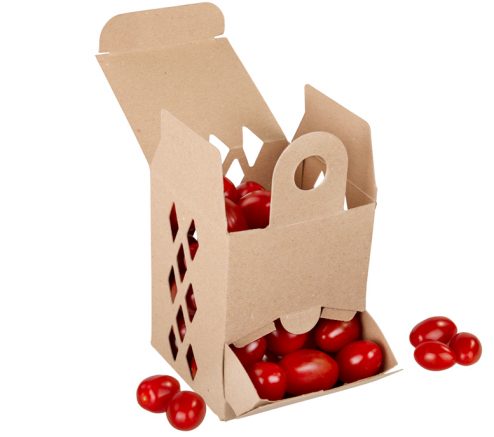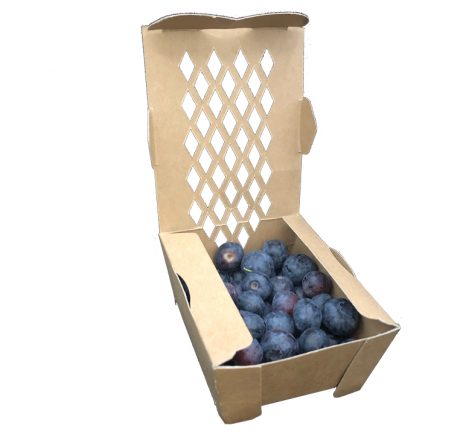In modern society, all good marketing intentions come to naught once an empty package must be discarded. What was created to be beautiful and valuable turns into a nuisance. Dutch packaging specialist, A Top Packaging, has a clear focus on this challenge: there always is a solution, one must just be committed to finding it.
(This column first appeared in Produce Business magazine)
Talking to Adriaan Verbeek and Aad Hoekstra of A Top is like being in the middle of a walking, talking, living encyclopaedic theatre of packaging. A great academic dissertation is interspersed with hilarious side-comments. A personal discussion with these two packaging fundis, who (together with their partners Steve Chapman and Lothar Rees) have spent a collective 110+ years designing effective packaging solutions — mostly for fresh produce and food — is extremely entertaining as well as enlightening and educational.

In 2016, the partners pooled their capabilities to create a company where extensive experience is combined with a passionate pursuit of innovation, and a focus on food and fresh produce. Their vision? To change the face of food packaging by developing new thinking and technologies, offering customers access to sustainable, circular solutions that are commercially feasible.
Aad Hoekstra, an engineer with an admirable state of service in food packaging, says his team is always looking for packaging problems that seem unsolvable. Paper, plastics, films and coatings, folding carton, injection moulding, moulded fibre, film extrusion — Hoekstra has seen it all. “To begin with, one has to understand the etymology of packaging. Thirteenth century Flemish wool merchants called a bundle of wool a ‘pak,’ a means of collecting something by wrapping it. This is still the most basic function of packaging.
“The preservation function of packaging is also an essential part of our story: how to package foodstuffs in such a way that the preservation component adds value to the product without harming the environment. We allow for hygiene, food safety and reduction of waste, but also integrate aspects of delivery in our thought processes. Try delivering a pizza without a box. On top of it, we look at promotion. Packaging has to shout out ‘BUY ME’!”
A Top’s slogan made me think twice before I understood it: ‘Nothing is what we want’. In other words, food packaging must be circularised in such a manner that in the end nothing remains.
Hoekstra’s partner, Adriaan Verbeek, spent most of his working life in fresh produce packaging. “To achieve maximum circularity, we base our designs on the complete life cycle of the intended product. This includes materials, recyclability, consumer behaviour, right up to possible leakage into the natural environment. To know where we are heading with our designs, we calculate stringent LCAs (life cycle assessments) right from the start. We create the best possible circular solutions, and then license out our products and technologies.
“We are not locked into a specific packaging type, specific machines, or specific factories. We simply find the most cost-effective solution for our circular products, and once the product has found a foothold we disappear into the background.”
FOCUS ON PRODUCE
To replace the almost 150 million plastic buckets that The Netherlands uses for snacking tomatoes, A Top developed a fully recyclable solution. It is made of 100% recycled carton, contains zero plastic, provides maximum visibility to the product, is square and stackable for excellent logistics, contains a snack drawer, and offers a great surface for printing.
A Top has also developed several innovations for soft fruit. The end product meets the highest recyclable and compostable standards, using ‘rPaper,’ a material much more durable than plastic variants. This mono-material packaging can be disposed of with wastepaper after use. It offers variants with or without a lid, with both having a special, patented bottom that is shock- and moisture- absorbent. It is highly stackable, fits in with current logistics concepts, and easy to print. Shape and volume content can be adjusted.

One of the most ground-breaking innovations that A Top has successfully designed is the ‘Pop-Up Cup.’ In the Netherlands alone, five billion of these cups are discarded every year. They are not (or hardly ever) reused or recycled because the economics do not add up. That should really be changed, as this single-use product has a considerable impact on the environment.
Hoekstra has the last word: “Packaging is like the one-day fly. A lot of work is put into something that only serves its purpose for a single moment. The same as the one-day fly, packaging often is designed solely for short-lived promotional beauty. The very next day, it turns into waste. This must change!”





